A Boston College-Aerodyne Research, Inc. group investigates soot particles in a laboratory setting
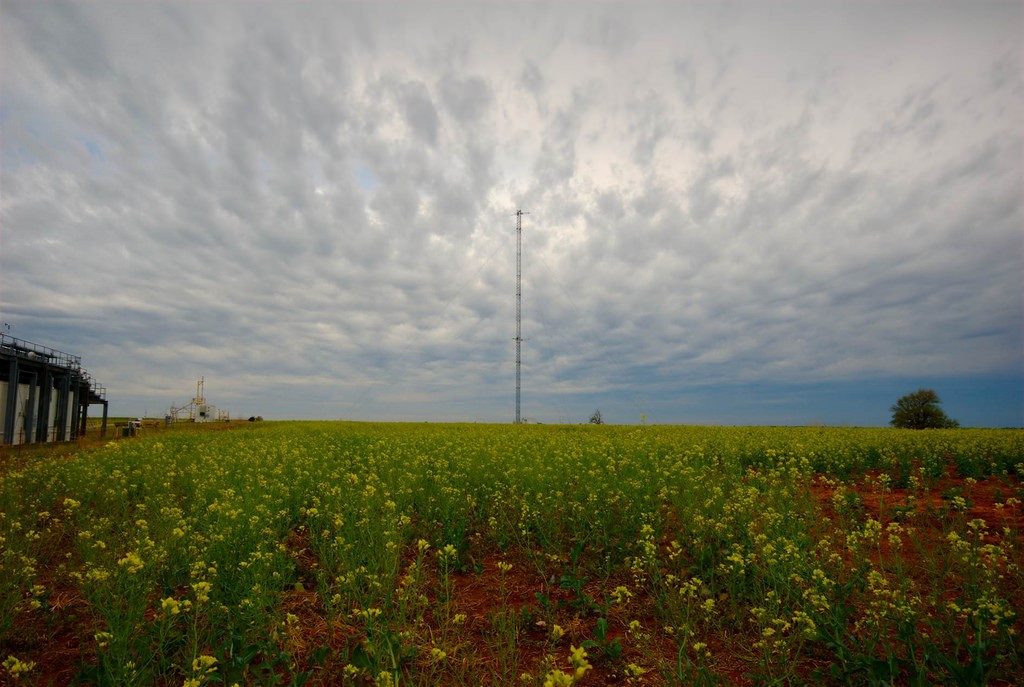
For as long as clouds have hugged the Earth and hovered above it, solid or liquid particles from land and sea have made their way into the air, combined in suspension with atmospheric gases, and dispersed as aerosols.
The particles can be from vegetation, soil, sea salt from breaking waves, marine microbes, or complex molecules formed through chemical reactions in the atmosphere.
They can also be carbonaceous aerosols, composed mainly of carbon and formed as a result of bits of wildfires, biomass burning, or incomplete combustion from cars, planes, and other fossil fuel sources.
Whatever their origin, aerosols absorb or scatter light. That influences the Earth’s radiation budget, the daily ledger of how much solar energy is absorbed or reflected back into space and how much terrestrial energy is radiated into space. That budget determines how the planet cools or warms.
Carbonaceous aerosols tend to absorb solar energy. Those that absorb only some are often called “brown carbon.” Those that absorb more of the solar energy are often referred to as “black carbon,” or “soot.”
To improve earth system models, scientists are researching the relative radiative impacts of each aerosol species.
Not That Long Ago
It was not that long ago (two decades, perhaps) that aerosols were largely ignored in the models designed to predictively simulate atmospheric conditions. That included ignoring soot particles formed during combustion.
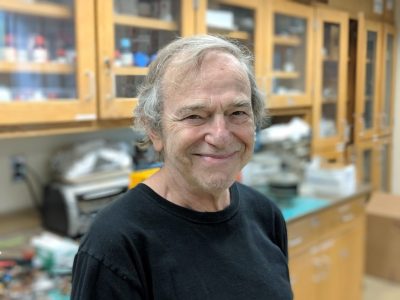
In part, this was because tracking aerosol particles and their chemistry was too computationally expensive to include in simulations. However, the computers that run atmospheric model simulations have gotten more powerful, including U.S. Department of Energy (DOE) supercomputers.
That means scientists have begun including more details about aerosol particles in simulations. At the same time, laboratory and field experiments are needed to insure that the details included in these models are correct.
As with other aerosols, the chemistry, size, and shape of particles that contain black carbon determine how those particles absorb or scatter light—what atmospheric scientists call an aerosol’s optical properties.
“All modeling and calculations indicate the climate effects of black carbon could be as high as carbon dioxide,” says Boston College (BC) atmospheric chemist Paul Davidovits.
That is despite soot’s very short atmospheric lifetime—perhaps a week, he says. By contrast, carbon dioxide can linger in the atmosphere for hundreds to thousands of years.
Soot impacts climate forcing, a term for any process, or “forcer,” that prompts a response from earth systems. Both volcanic eruptions and greenhouse gases, for example, are climate forcers.
It is also known that soot causes higher atmospheric temperatures. That disrupts both the Earth’s radiation balance and its water cycle, which determines cloud formation and precipitation.
Learning More
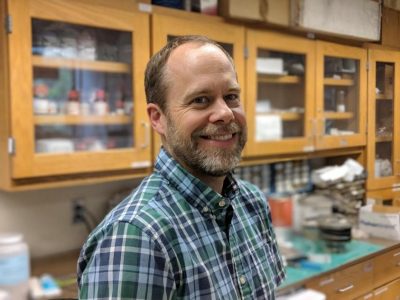
Two decades ago, because soot aerosols were left out of models, and because little was known about black carbon itself, Davidovits and another Massachusetts scientist were inspired to learn more.
By 2005, he and Aerodyne Research, Inc. physical chemist Timothy Onasch had begun the first in a series of collaborative laboratory studies to investigate the properties of black carbon. They dubbed the gathering “BC1” and themselves the Boston College-Aerodyne (BC/ARI) research group.
Not long before, Aerodyne had developed some of the first sophisticated laboratory instrumentation for measuring the properties of atmospheric aerosols. Davidovits called the company “a pioneer” in the effort, especially for its workhorse aerosol mass spectrometer (AMS).
As with other atmospheric aerosol instruments, an AMS pulls in particles from environmental air and measures them in real time for specific properties. Specifically, an AMS vaporizes particles to reveal their size and chemistry.
The Davidovits group, early on, helped to calibrate the AMS. It was quickly adapted for field experiments that required analyzing ambient aerosols.
ASR Takes a Look
After the 2005 gathering, BC1 spun off six peer-reviewed papers, and soon caught the attention of the DOE, specifically its Atmospheric System Research (ASR) program.
ASR supports research into aerosols, clouds, radiation, precipitation and other natural phenomena that influence global and regional climate. The goal: More process-level knowledge that will inform improved simulations of future atmospheric conditions.
Over the past decade, meeting periodically and generating dozens of papers, the group settled on a primary theme: Use state-of-the-art field instrumentation in a controlled laboratory setting to investigate the complex chemical, physical, optical, and hydroscopic properties of carbonaceous particles. (BC5, the latest meeting, unfolded over three weeks in May, 2018.)
The BC studies provide a framework for developing, quantifying, and applying new instruments to peer into the shapes, chemistry, and atmospheric effects of particles containing black carbon, which include absorption and cloud activation.
The collaborative experiments at BC also provide controlled calibration points that sharpen the utility of field instruments used in what scientists call “ambient” (outdoors) experiments.
All the work goes toward understanding the fate of soot swept into the atmosphere, its mixing behavior with other compounds, and how its particles interact with light.
DOE and ASR are in the business of funding projects that illuminate radiative transfer in the atmosphere. The work on soot fits right in.
Eventually, scientists “would like to map (soot) sources,” says Davidovits, “put them in a model, and calculate how much absorption and scattering they cause over the week of their lifetime.”
Inside BC5
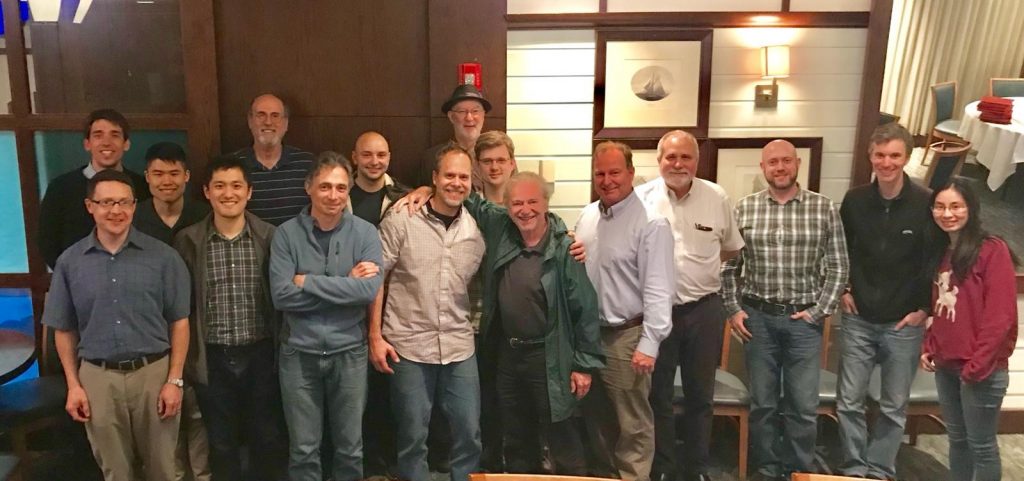
During BC5, an energetic scrum of atmospheric scientists, chemists, imaging specialists, post-doctoral researchers, and students gathered for the fifth in the series of laboratory collaborations.
Among the universities and institutions represented were the University of California, Davis, the Massachusetts Institute of Technology (MIT), Stony Brook University (New York), Michigan Technical University, University of Exeter (United Kingdom), Brookhaven National Laboratory, the University of Georgia, and the University of North Carolina, Chapel Hill.
Past BC studies included research groups from the Weizmann Institute of Science in Israel, the University of Eastern Finland, the University of Helsinki, the Desert Research Institute (Nevada), the National Oceanic and Atmospheric Administration, and Los Alamos National Laboratory.
ASR provided travel and accommodations funding for visiting scientists at BC5, which was part of a $500,000 DOE grant that in 2017 was renewed for a year.
How did things go? Davidovits jumped right to the punchline. “One word would be—‘excellent.’ ”
Things went so well, he adds, in part because “here we had highly controlled and well developed methods to determine the size of particles—so then we can characterize optical properties and to some extent, shape.”
Laboratory studies can control size, chemistry, and shape in ways that elucidate physical and chemical properties of various aerosol species.
BC5 results will also help generate insights about “aerosols that we don’t make controllable, such as those from the environment,” adds Davidovits.
The gathering’s experimental theme this time around was to learn more about soot particle mixing states, and how each mixing state can affect the optical and physical properties of aerosol particles.
The researchers dealt with two kinds of mixing states.
They continued their long-time study of intra-particle mixing, which relates to the internal mixing that determines the morphology (shape) of soot particles.
However, the focus of BC5 was on inter-particle mixing states—the external combination of particles with different shapes and chemistries.
The BC5 team is also investigating the ice-nucleating properties of black carbon, intra-particle mixtures, and secondary organic aerosols (those formed in the atmosphere). That effort is in collaboration with MIT’s Daniel Cziczo and Stony Brook’s Daniel Knopf.
Ultimately, the Boston College-Aerodyne (BC/ARI) research group wants to explain what happens to the optical and cloud-forming properties of particles that contain black carbon when they undergo intra-particle and inter-particle mixing in the atmosphere.
Meanwhile, of course, members of the group have related research underway at their home institutions.
On Every Surface: Particle Measurement Hardware
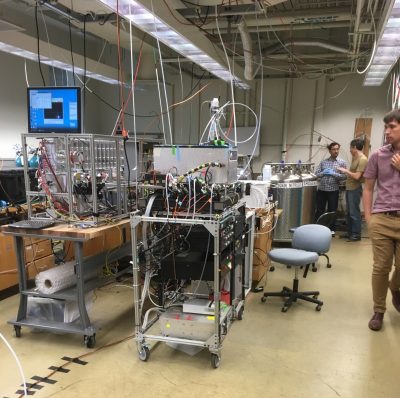
The BC5 scientists included returning BC/ARI veterans and new graduate students and post-doctoral researchers on loan from participating universities. Using a jamboree of complicated instruments, they set out to look at the optical properties of externally mixed soot particles.
Such particles, meant to simulate those found in the ambient atmosphere, are created when one type of black carbon (such as flame soot) mixes with black carbon particles with a different chemistry and shape (such as coated soot).
Several universities, including Georgia and UC Davis, tried out their photoacoustic spectroscopy devices, which heat microscopic particles with a laser. Scientists then derive particle optical properties by listening to how the heat dissipates in the air as sound.
Brookhaven’s Arthur Sedlacek brought his photothermal interferometer, which is being developed to directly measure ambient aerosol absorption.
Sedlacek and Ernie Lewis (also from Brookhaven) contributed a single-particle soot photometer (SP2) from Droplet Measurement Technologies. It measures the black carbon content of aerosol particles.
Experiments during BC5 revealed some hitherto unexpected features of this important field instrument. The resulting “caveat about using the instrument,” says Onasch, simply “represents a stage in its development. It’s still the only way to directly measure black carbon.”
These optical instruments and other BC5 gear are state-of-the-art instrumentation for looking at the properties of freely floating particles.
“It’s no small task to have these many instruments work in the same place at the same time,” says Davidovits of the busy, exciting place his laboratories at Boston College laboratory were during BC5.
The Beauty of the BC Setting
BC5 illustrated the many advantages of laboratory-based scientific work.
One was control.
“We can generate and control variables, explicitly,” says Onasch. “Then we can vary one at a time to understand their effects.”
All those instruments working in tandem on the same set of problems also presents an opportunity to check how one instrument performs compared to another, or many others. Measurements are cross-validated.
The two BC5 organizers pointed more generally to the importance of laboratory work.
Davidovits says that “in large measure, laboratory experiments serve as a calibration, or a standard, by which you can understand field experiments.”
Compared to dramatic field campaigns, adds Onasch, indoor scientific experiments “are a little harder to explain to people” but provide a fixed set of measures, against which ambient data can be checked.
Besides, says, Davidovits, it is in laboratories that most atmospheric science field instruments originate.
One-year funding for the renewed ASR/DOE proposal expired in June. Will there be a BC6?
Says Davidovits, “One never knows.”
# # #
This work was supported by the U.S. Department of Energy’s Office of Science, Office of Biological and Environmental Research as part of the Atmospheric System Research Program.

